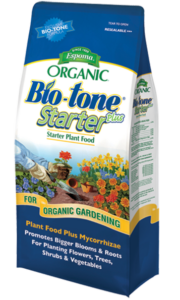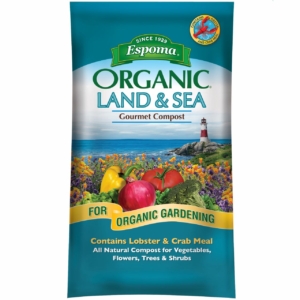Video: Planting Vegetable with Garden Answer
It’s time to plant some corn, beans, and tomatoes at the @Garden Answer household! Tag along to see how Laura gets her vegetable gardening done with some Espoma products.
Featured Products:
It’s time to plant some corn, beans, and tomatoes at the @Garden Answer household! Tag along to see how Laura gets her vegetable gardening done with some Espoma products.
Featured Products:
Ready to make some fresh salsa this summer? Join Laura from @GardenAnswer as she plants all the ingredients in a miniature garden using her favorite Espoma products.
Featured:
Laura from @Garden Answer is planting sweet and spicy peppers in her garden! Watch to find out which Espoma products help her get the job done.
Featured:
Kevin from @Epic Gardening is walking us through how he plans to maintain those tomatoes he recently planted with the help of Espoma. Follow along to hear his top tips!
Featured:
Follow along as Laura from @Garden Answer plants the Proven Winners 2022 Recipes of the Year using tried-and-true Espoma products!
Featured Products:
Tomatoes flourish in full sun and warm temperatures.
However, if you’re in short supply of sunny or warm days, havoc can begin taking over your tomatoes. Dreary-looking young tomato plants WILL flourish, once the weather changes, but it’s important to do what you can to make sure they have some extra care and are fed in the meantime.
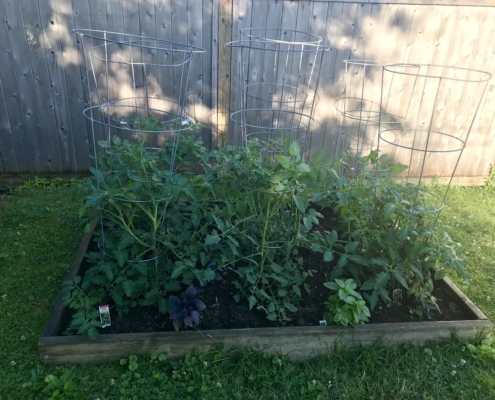
Give Tomatoes a Lift
If you’re waiting on the weather to improve, the most important thing you can do for your tomato plants is give them some support. Tomato plants often bend, lean or even break as fruit matures. To help your plant from becoming damaged, get to know the tomato you’re planting. Indeterminate plants benefit from some support, while determinate tomatoes may be just fine on their own.
Use tomato cages, wood or metal stakes, or a trellis to give plants extra support. It’s really a matter of preference which one you choose.
The most important thing is that you’re keeping plants off the ground to avoid pests, diseases and rot. Learn more about supporting your tomatoes here.
Add Nutrients
The trick is to feed tomatoes monthly with an organic, nitrogen-heavy fertilizer. Tomatoes have big appetites, so their all-you-can-eat buffet runs out quick. Feed single in-ground plants with 3 tablespoons of Tomato-tone monthly. For rows of plants, spread 1 cup on each side per 5 feet. Feed potted plants 1.5 teaspoons per 4” pot diameter.
Pests got plants down?
When it comes to insects in your garden, don’t be quick to kill. Not all insects are enemies. In fact, most insects are essential players in your organic garden’s success. Others are neutral and don’t cause any harm. Yet some will ruin your harvest.
Spotting the difference between the good and the bad can be tricky, so keep your eyes peeled. Hornworms, fruitworms, aphids and beet armyworms can all spell disaster for your crop. Identify if these bad bugs are the cause of your problems here.
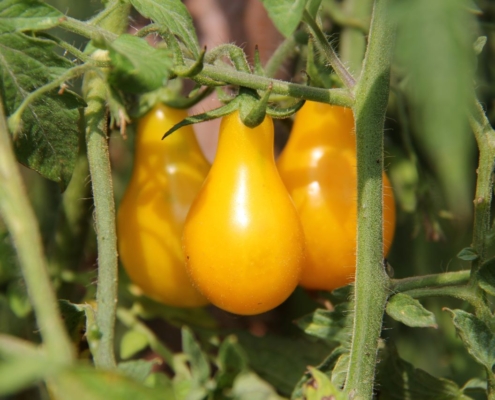
Less is More
Pruning tomatoes is a controversial practice that many expert gardeners say is unnecessary. There are times when pruning can be beneficial — fewer leaves mean air circulates better and leaves dry quicker, reducing the risk of disease.
Plants with less density direct energy toward producing bigger fruit. Plus, tomatoes often ripen earlier after a good pruning, allowing you to enjoy your harvest sooner.
Vertically grown tomatoes are ultimately easier to prune because unnecessary suckers and leaves are more visible. Though pruned plants may be better protected from insects and disease, staked and pruned plants may be more susceptible to blossom end rot and sunscald. Get the scoop on pruning tomato plants here.
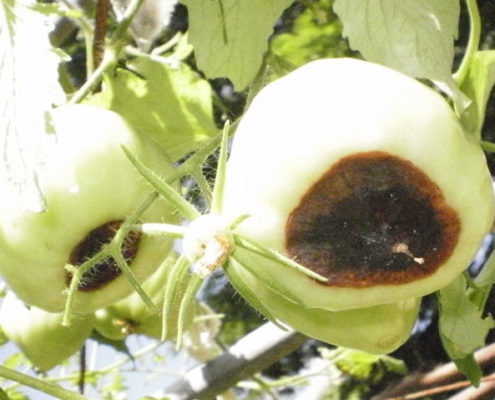
Bad Fruit
If a dark, water soaked spot has formed on your tomato you may have blossom-end rot. This problem is likely caused by an imbalance of calcium in the plant. Large spots will dry out and appear to be leathery. Maintain consistent soil moisture throughout the growing season. When the weather is dry, water at least twice a week and moisten the soil to a depth of at least 6 inches. Find out more about stopping blossom end rot here.
See how Laura from Garden Answer grows tomatoes upside down!
Featured Products
Houseplants aren’t limited to staying indoors year-round, in fact they love the feeling of sunshine on their leaves and breathing in some fresh air. However, when you take them outdoors, you need to do so appropriately, otherwise they may go into shock.
Acclimating houseplants to outdoor conditions will reduce shock and give them the best chance of thriving. Wait about four weeks from the last frost before you start to acclimate them to the outdoors.
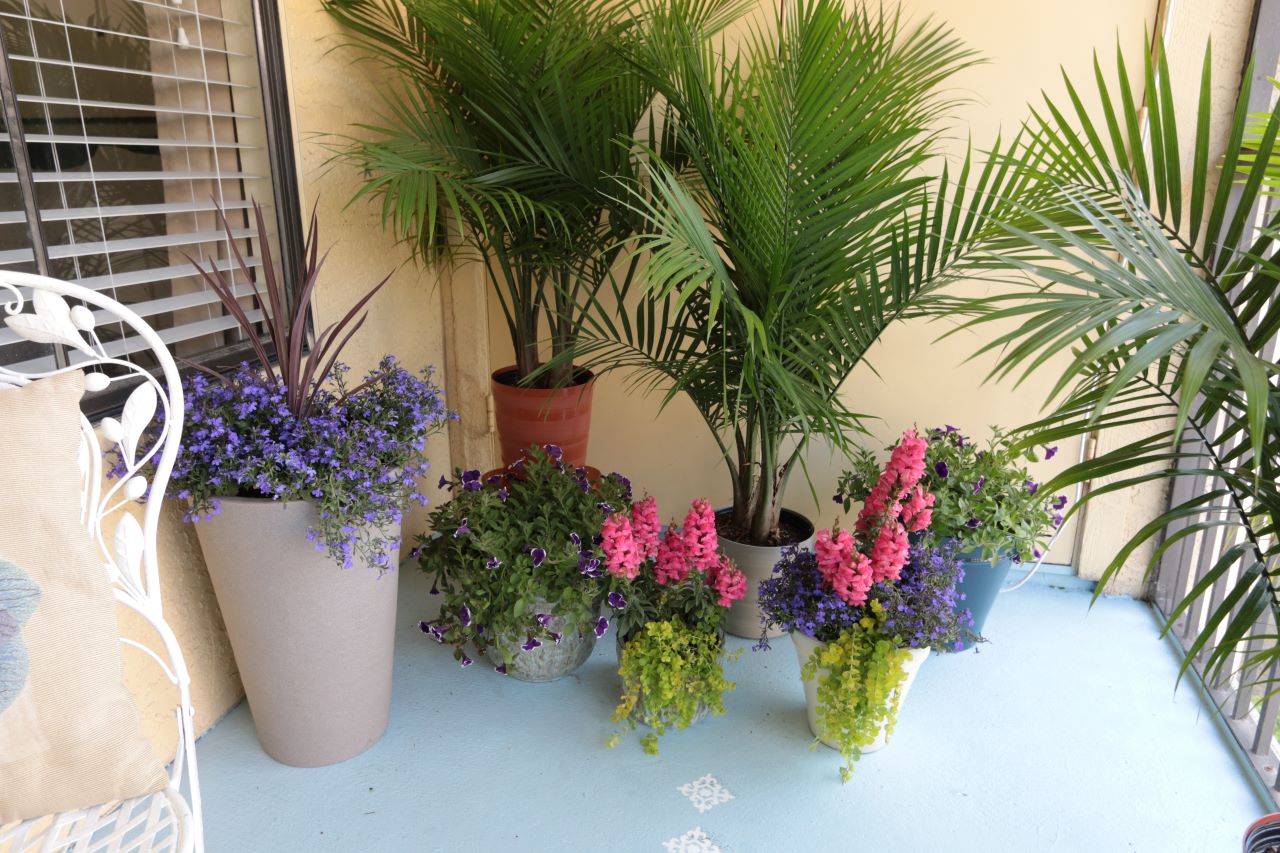
Tips for Taking Plants Outdoors: Hang in the Shade
While this might seem counter-intuitive, direct sunlight can do more harm than good at first. Since the sunlight is filtered through windows inside, your houseplants aren’t used to the harshness of direct sun. Find shaded areas on your patio or under a tree for a few hours each day. Gradually move houseplants to an area with a little more sunshine daily, until they can be outside all day.
It will only take a few weeks to adapt to the light and then plants can stay outside until the end of the summer. Once they have adapted to the sunshine, be sure to place them in light they will enjoy. Similar to being indoors, don’t place plants in direct light, if they prefer indirect.

Clip and Snip
Trim away any foliage that might have been damaged from the move or from being inside. Remove any brown tips and inspect them for signs of pests or diseases.
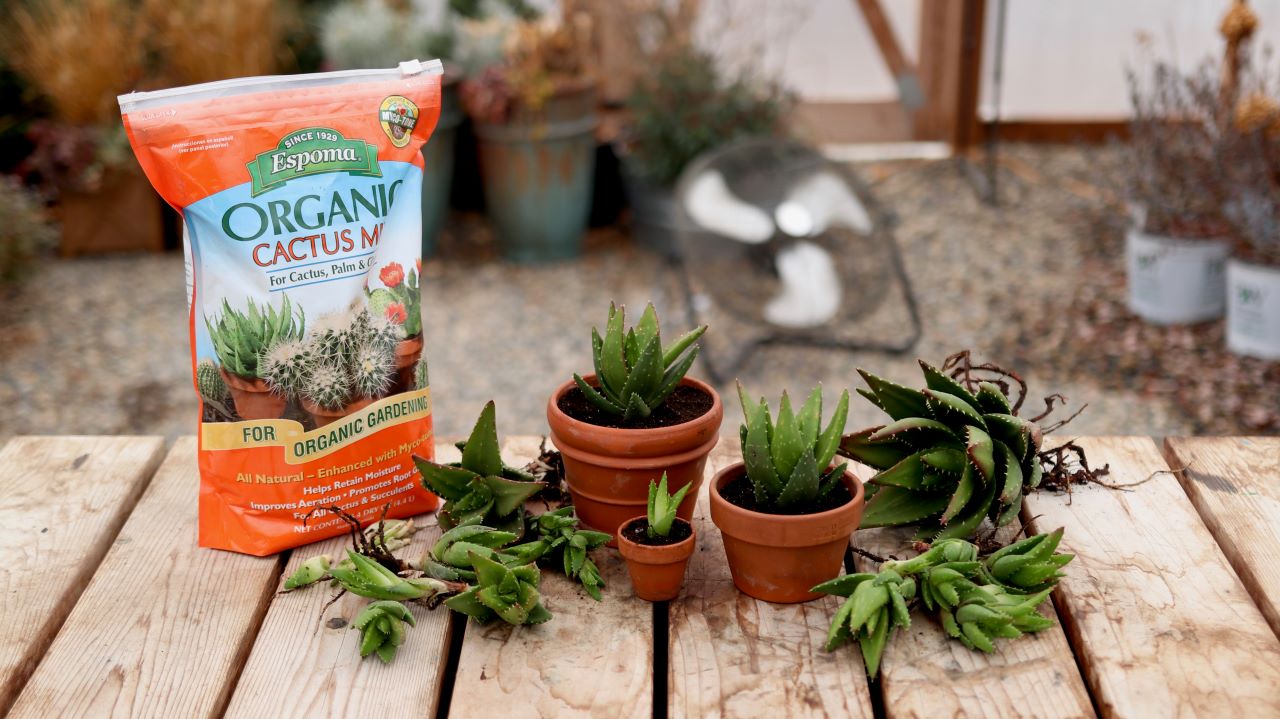
Top it Off:
Revitalize soil by working in fresh Espoma’s Organic Potting Mix in each container. This will help to hold moisture and nutrients around plants’ roots.
Give Them a Drink
Power up plants by giving them a big drink of water enhanced with nutrients. Make it easy on yourself and use Espoma’s Grow! Liquid plant food.
Dump the water
Get in the habit of dumping the excess water after watering to avoid mosquitos and other unwanted pests..
*****
Learn more about houseplant care with Garden Answer.
Featured Products:
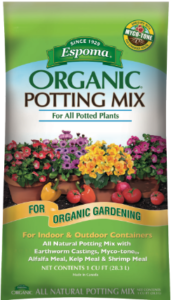

Harvest is upon us! Those big juicy tomatoes are taunting you on the vine, waiting for you to enjoy!
Garden tomatoes are jam packed with flavor compared to grocery store tomatoes. Make sure to pick them when they are just right to enjoy with your favorite tomato recipes. These harvesting tips will ensure you get a flavorful tomato every time.
Harvesting
Harvesting tomatoes isn’t complicated; it’s just all about timing!
Leave your tomatoes on the vine as long as possible. Wait until your tomatoes have completely changed color. If it is red (or yellow) on one side and green on the other, your tomato isn’t ready yet. It needs to have an even color all around it. If your tomatoes have started changing color and are starting to crack, bring them inside and place them in a paper bag to finish ripening.
Trust your gut. If you think the tomato is ready for harvest, pick it! You can also do the squeeze test. Gently squeeze your tomatoes, tomatoes ready for harvest will be firm, but not too hard.
Recipes
After you’ve harvested your tomatoes, try one of our favorite recipes!
If you want more delicious tomato recipes, check out our Top Tomato Recipes! And be sure to download our Tomato Guide to answer all of your tomato growing questions.
There’s no better way to enjoy your garden than by encouraging it to grow bigger and better. Before your summer veggies and flowers peak, take your garden to the next-level by refueling it.
Knock-out these 5 essential tasks and your garden will thank you. You’ll extend your summer season and ensure that your lawn and garden are in tip-top shape.
5 Ways to Give Your Summer Garden a Boost
1. Hydrate. When it’s hot, dry and muggy, the best thing is a nice cold drink. Your plants need some H2O, too. The trick to keeping your garden hydrated during the hottest days is not to water more. It’s to water smarter. Water plants deeply in the morning so they have the entire day to soak it up.
2. Keep plants fed. Your summer veggies and flowers are hungry. Feed hanging baskets, container gardens and annuals with liquid Bloom! plant food every 2 to 4 weeks. Vegetables such as tomatoes and peppers are heavy feeders. Continue to feed every 2 weeks with organic fertilizers Tomato-tone or Garden-tone.
3. Prune and deadhead. Extend the life of perennials by deadheading flowers as soon as they are spent. This will encourage plants to keep blooming as long as weather permits. Your roses will thank you. Prune tomato suckers and shrubs now, for fuller plants later.
4. Mow lawns strategically. When mowing, keep the mower blades high (3” or higher) to encourage healthy roots. Cut grass in the evening to give it time to recover and keep yourself cool.
5. Plant more! There are many quickly maturing plants that will thrive in summer gardens and be ready for harvest in the fall. Try planting radishes, cucumbers, beans and more.
Sit back and relax! Take a good look at your hard work and dream about the rewards and bountiful harvests you’ll enjoy in the months to come.
If you’re looking to get a better tomato harvest this summer, be sure to check out our complete tomato guide!
*****
Featured Products:
Summer brings the prime-time vegetable growing season and the delicious harvest of our fruit and vegetable gardens. But what happens when that summer heat gets a little too hot and leaves drought-prone areas high and dry?
Don’t stress — even though water is an essential component to vegetable gardening, there are plenty of ways to grow healthy, fresh veggies during dry times.
Try these low-water vegetable gardening tips for success all season long.

1) Build a Strong Base
When planting in dry conditions, amending your soil is crucial to success. Start with Espoma’s Bio-tone Starter Plus for big, healthy blooms. Then, add rich Espoma Organic Land & Sea Compost to the soil to increase water retention. After you have healthy soil as your base, be sure to add mulch. A 3-4” layer of mulch on top of your soil can reduce watering needs by up to 50 percent. Mulch keeps the soil cooler and traps moisture in the soil, instead of allowing it to evaporate.
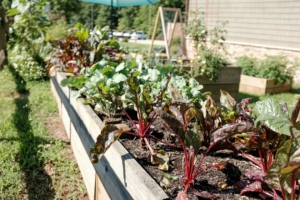
2) Strategic Planning
When it comes to drought-tolerant vegetable gardens, plan strategically. Raised bed gardens and containers retain moisture better than open gardens. Use Espoma Organic Raised Bed Mix for all your raised bed plantings to ensure your plants grow deeper roots, greener foliage, and more productive plants.
Instead of planting in straight rows, plant in a zig-zag or diamond pattern. With plants spaced out, their leaves create more shade and keep the soil cooler. Try companion planting, too. Pair plant varieties that work well together and benefit from each other.
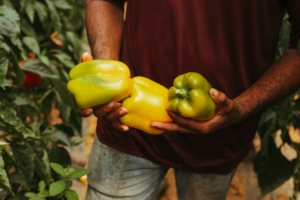
3) Drought-resistant veggies to consider planting during drier times:
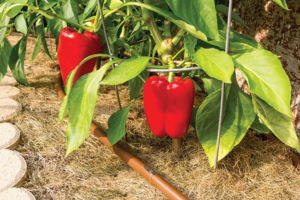
4) Be Water Wise
Some of the water used in overhead watering systems never makes it to the soil. Most of the water evaporates on the leaves before serving its purpose.
Instead, try a drip irrigation system for more efficient watering. Drip watering methods can use upwards of 70 percent less water by avoiding evaporation, runoff and wind. Soaker hoses are another water-saving alternative. Lay the hose across an especially dry patch of soil while small holes in the hose allow water to seep through to the soil.
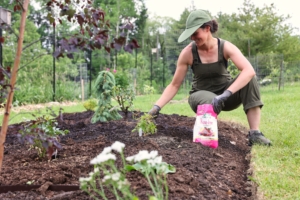
5) Time It Right & Keep Up with Maintenance
The time of day you garden matters, especially during drought. Water early in the morning or later in the evening when temperatures are cooler to reduce evaporation. Check soil moisture regularly and remove weeds, which compete with your veggies for water and nutrients. Prune back excess foliage if needed to help plants conserve energy and moisture. Staying on top of small tasks can make a big difference in helping your garden thrive through the heat.
Bonus Tip: If all else fails, move your garden indoors! Grow smaller varieties of vegetables in small spaces. While indoor vegetable gardens still need proper watering, the soil won’t dry as fast as it would in the hot summer sun.
*****
Love the heat and the sun? Learn more about succulent gardening here!
Featured Products:
